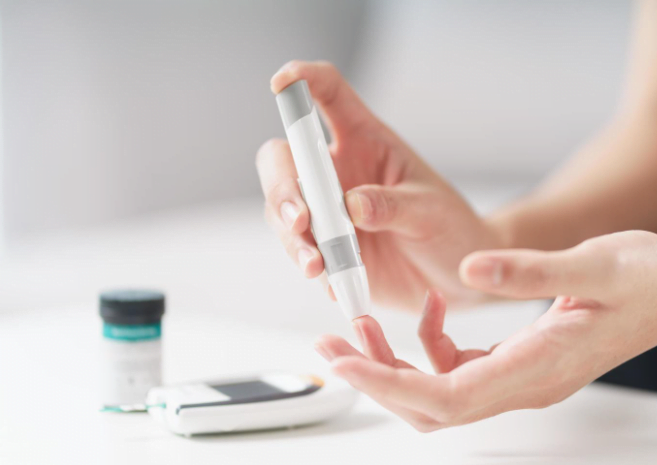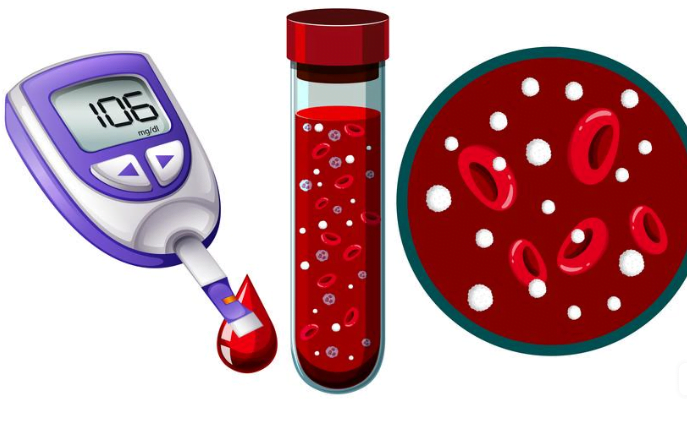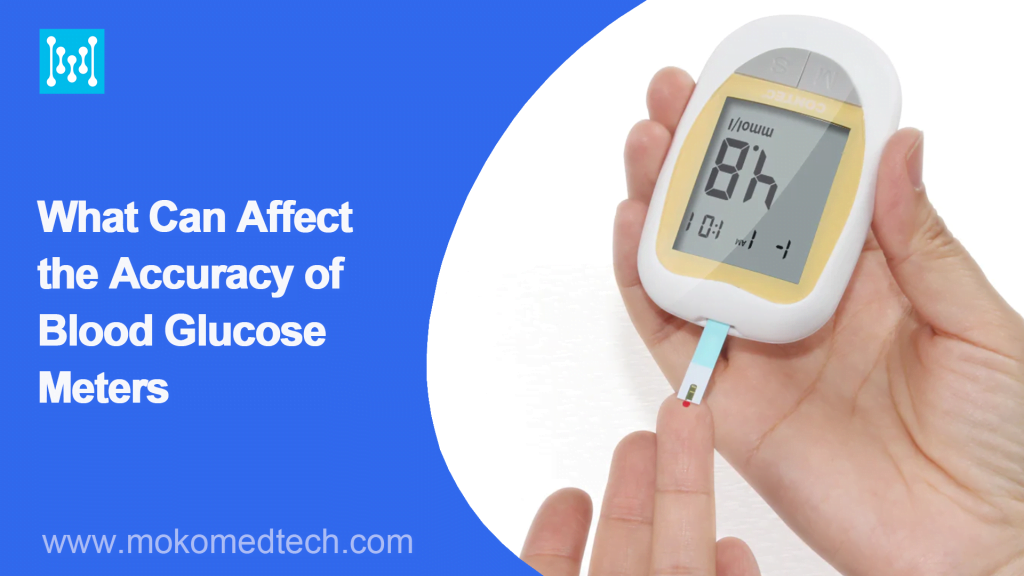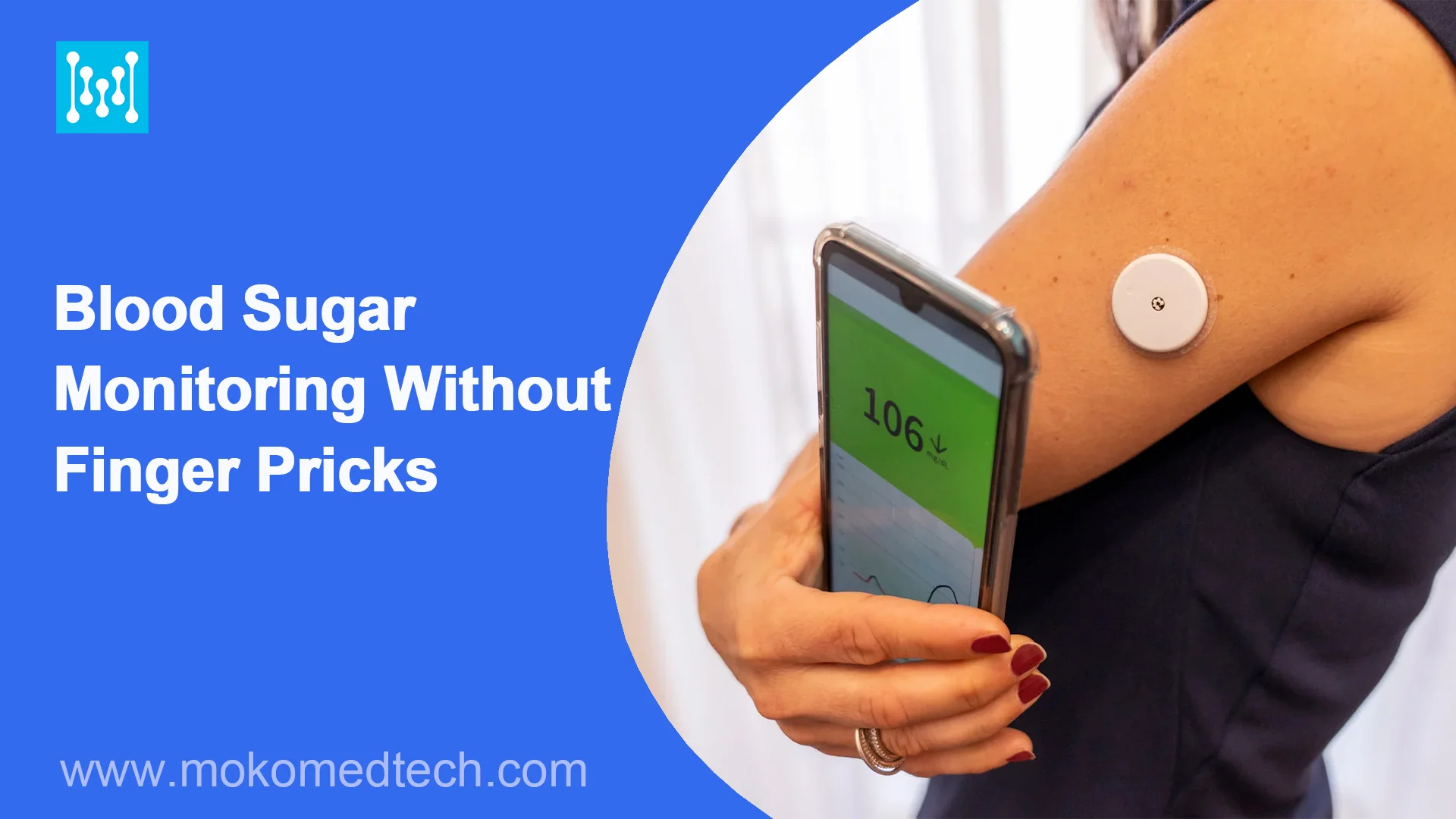Introduction
Blood glucose monitoring is an important part of the treatment of diabetes. Only by knowing their blood glucose status can diabetics find the most suitable method of controlling their sugar. However, many diabetics have found that the same drop of blood measured by different blood glucose meters gives completely different values. And that the blood glucose value measured by themselves is always different from that measured in the hospital. Sometimes even if they haven’t eaten anything and haven’t exercised, there is still a big gap between the two blood glucose measurements before and after. So what factors affect the accuracy of blood glucose meters?
What Is an Accurate Glucose Meter Measurement?
An accurate glucose meter measurement refers to the precise and reliable measure of blood glucose levels by a glucose meter, also known as a blood glucose monitor or glucometer. Blood glucose meters are essential tools for diabetics to monitor their blood sugar levels regularly.

The accuracy of a glucose meter measurement is crucial because it impacts decisions related to diabetes management, such as insulin dosing, dietary choices, and overall health. An accurate glucose meter reading ensures that individuals with diabetes can effectively manage their condition and avoid complications associated with high or low blood sugar levels.
The accuracy of a glucose meter can be expressed in terms of its “accuracy range” or “percentage error.” For example, a meter with a ±10% accuracy means that the measured value can deviate by up to 10% from the actual blood glucose level. Most modern glucose meters have accuracy within this range or even better, with some high-end meters offering ±5% accuracy or better. According to FDA-drafted rules in 2019 regarding personal use glucose meters, they need to be accurate within the following two ranges to be considered compliant:
- 95% within +/- 15% of lab test results over the entire measurement range
- 99% within +/- 20% of the lab test results over the entire measurement range
This means that if the lab test results show that your blood glucose is 170, your glucose meter must read between 145 and 195 to be considered within the accuracy range.
It’s important to note that while glucose meters are generally reliable, their accuracy can be affected by a variety of factors.
What will affect the accuracy of blood glucose meters?
Here’s a table summarizing the factors that can affect the accuracy of blood glucose meters:
| Factor | Description |
| Quality of Test Strips | The accuracy of blood glucose meters depends on the quality of the test strips used for measurement. Using expired or low-quality strips can lead to inaccurate results. Proper storage is essential to maintain strip quality. |
| Environmental Conditions | Extreme temperatures, humidity, and altitude can influence the accuracy of blood glucose meters. It’s essential to use the meter within the specified temperature and humidity ranges provided by the manufacturer. |
| User Technique | The way users handle the blood glucose meter and perform the test can impact accuracy. Proper fingerstick technique and following the meter’s instructions are crucial for reliable results. |
| Calibration | Some blood glucose meters require regular calibration using a control solution or lab blood glucose measurements to maintain accuracy. Incorrect calibration can lead to inaccurate readings. |
| Hematocrit Levels | Hematocrit is the percentage of red blood cells in the blood. Extremely high or low hematocrit levels can affect blood glucose meter accuracy, as they alter the blood’s composition. |
| Interference from Substances | Certain substances, such as high doses of vitamin C or medications containing acetaminophen, can interfere with blood glucose measurements and lead to inaccurate readings. |
| Sample Size | The amount of blood applied to the test strip may affect the accuracy of the result. Insufficient blood may lead to underestimation, while excess blood may result in dilution and overestimation of glucose levels. |
| Meter Maintenance and Cleaning | Regular maintenance and cleaning of the blood glucose meter are essential to ensure accurate results. Contaminants on the meter or its components can lead to inaccurate readings. |
| Strip Storage and Handling | Improper storage or mishandling of test strips can impact accuracy. Exposure to moisture, light, or extreme temperatures can deteriorate the strips’ performance and lead to incorrect readings. |
| Blood Sample Contamination | Contamination of the blood sample with substances like food, dirt, or cleaning agents can affect test results. It’s crucial to clean the finger before testing to avoid potential interference. |
| Meter Age and Quality | Older meters or meters of lower quality may have less advanced technology and calibration features, potentially leading to less accurate results compared to newer and higher-quality models. |
| User-specific Factors | Individual factors, such as medical conditions, medications, or physiological variations, can impact blood glucose levels and, consequently, the accuracy of glucose meter readings. |
How do you know if your glucose meter is accurate?
Determining the accuracy of a glucose meter is essential for managing diabetes effectively. Here are some steps to help you verify the accuracy of your glucose meter:

- Check the device’s manual
Review the user manual that came with your glucose meter. It should provide information about the meter’s intended accuracy and any specific testing requirements.
- Perform quality control checks
Many glucose meters come with a control solution that you can use to perform quality control tests. Follow the instructions in the manual to check if your meter is within the specified range. This is usually done by testing the control solution and comparing the results to the expected range provided by the manufacturer.
- Compare with lab results
Occasionally, you can check the accuracy of your meter by comparing its readings with those from a laboratory blood glucose test. To do this, you should take your glucose meter with you to your next doctor’s appointment or when you get a lab test done.
- Test with control solution regularly
Use the control solution regularly as directed by the manufacturer to ensure the meter’s ongoing accuracy. This can help you identify any deviations in accuracy over time.
- Inspect test strips and meter
Ensure that your test strips are not expired, stored correctly, and have not been contaminated. Also, check the meter for any signs of damage or malfunction.
- Calibrate the meter (if required)
Some glucose meters require calibration, especially those with continuous glucose monitoring (CGM) systems. Follow the calibration instructions provided by the manufacturer.
- Use a control solution when changing test strips or batteries
Whenever you change the test strips or batteries, use the control solution before testing your blood glucose to make sure the meter is working accurately.
- Perform double checks
On occasion, perform a duplicate test by using a second glucose meter to compare results.
- Keep a record
Maintain a log of your blood glucose readings along with any comparisons with lab tests or second-meter readings. If you notice consistent discrepancies, contact the manufacturer or your healthcare professional for advice.
- Contact the manufacturer or healthcare professional
If you have concerns about the accuracy of your glucose meter, reach out to the manufacturer’s customer support or consult your healthcare professional for assistance.
How to solve or prevent the inaccuracy of blood glucose meters?
Usually, when using a blood glucose monitor, it can be measured accurately as long as it is operated correctly. However, the accuracy of blood glucose monitors can be affected by various factors. The following are solutions/preventive measures for some of the factors that affect the accuracy of blood glucose meters.
| Factors Affecting Blood Glucose Meter Accuracy | Steps to Resolve or Prevent |
| Contaminated Test Strips | – Store strips properly in a cool, dry place away from moisture and direct sunlight. – Check the expiration date and do not use expired strips. – Avoid touching the test area of the strip. |
| Inaccurate Calibration | – Use only the appropriate calibration solution provided by the manufacturer. – Follow the meter’s calibration process correctly. – Repeat calibration if necessary. |
| User Error | – Some meters are affected by high altitudes; check if your meter has any limitations. – Avoid extreme temperatures or humidity during testing. – Keep the meter and strips within the specified environmental conditions. |
| Insufficient Blood Sample | – Use an adequate amount of blood as specified in the meter’s manual. – Milk the finger gently to get a proper blood drop. – Ensure the blood fills the entire test area on the strip. |
| Hematocrit and Hemoglobin Variations | – Some meters are designed to correct for hematocrit and hemoglobin variations; use such meters if applicable. – Be aware that extreme variations might still affect accuracy. Consult with a healthcare professional if you have concerns. |
| Altitude and Environmental Conditions | – Some meters are affected by high altitude; check if your meter has any limitations. – Avoid extreme temperatures or humidity during testing. – Keep the meter and strips within the specified environmental conditions. |
| Medications and Substances Interference | – Consult with a healthcare professional about medications that can affect glucose readings. – Be cautious with substances that might interfere with readings (e.g., ascorbic acid or oxygen). |
| Meter Calibration Issues | – If the meter consistently shows inaccurate readings, contact the manufacturer for troubleshooting or replacement. – Regularly calibrate the meter according to the manufacturer’s guidelines. |
| Meter Maintenance and Quality Control | – Clean the meter and its components regularly following the manufacturer’s instructions. – Participate in any quality control programs provided by the manufacturer. – Store the meter properly when not in use. |
| Aging and Wear of the Meter | – Replace the meter as recommended by the manufacturer or when it shows signs of malfunction. – Keep the meter in good condition to ensure accurate readings. |
| Individual Variability | – Understand that individual variation exists in glucose readings, especially in certain health conditions. – Use the meter as a tool to monitor trends and make decisions based on patterns rather than individual values. – Work closely with a healthcare professional for diabetes management. |
If you encounter persistent accuracy issues with your blood glucose meter, consult with a healthcare professional or contact the manufacturer for further assistance. They can provide more specific guidance based on your situation.
Conclusion
For the diabetic community, staying informed about advancements in meter technology and adhering to best practices will undoubtedly lead to more accurate readings, ultimately helping individuals with diabetes achieve better health outcomes and improved quality of life. Accurate blood glucose readings are paramount for effective diabetes management. While blood glucose meters have revolutionized diabetes care and empowered patients to take control of their health, understanding the factors that affect meter accuracy is crucial. MOKOMEDTECH provides manufacturing services for blood glucose meters. Our products are ISO 13485 certified and FDA approved, providing diabetics with affordable, accurate technology to help them better manage their health.












